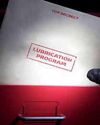
They write documents that you must read every single word to work out what they're trying to say. But having a final reveal is never a good thing in any technical document.
Engineering reports should be like bad movies you need to give the ending away at the beginning.
Why?
People watch movies to be taken on a journey; managers read reports to get information.
This isn't to say that you shouldn't try and make engineering reports enjoyable -you should. But you need to understand the audience, which is not a typical movie-goer. And while you may be proud of your research and analysis, no one wants to read an extensive report on how you got there.
Getting reports right is important. Managers will quickly work out which engineers give them the best information in the easiest way, and these engineers are the ones that managers remember when it comes to promotions, special assignments, and raises. So here are some tips on writing better reports.
Tip #1: What Does Your Reader Need to Hear?
Simple question, right? But I'm constantly amazed by how often this crucial question is forgotten by engineers.
A report is written to provide information about a decision that needs to be made. If this isn't the case, the report is a waste of time. For example, a manufacturing company may need to decide whether to extend the warranty period of a consumer product. So, let's break this down into what information the decision-maker needs to know:
- How much money will this decision make or lose the organization?
Writing this out helps make it clear in your mind as the author, but it's still too "high-level". We need to break this information requirement down further:
この記事は MACHINERY LUBRICATION INDIA の March - April 2024 版に掲載されています。
7 日間の Magzter GOLD 無料トライアルを開始して、何千もの厳選されたプレミアム ストーリー、9,000 以上の雑誌や新聞にアクセスしてください。
すでに購読者です ? サインイン
この記事は MACHINERY LUBRICATION INDIA の March - April 2024 版に掲載されています。
7 日間の Magzter GOLD 無料トライアルを開始して、何千もの厳選されたプレミアム ストーリー、9,000 以上の雑誌や新聞にアクセスしてください。
すでに購読者です? サインイン

The Secrets For Implementing A Clean lubricant Program
If you could find an investment that guaranteed a return 40 times greater than your initial investment, you probably wouldn't pass it up.

MAINTAIN? REPAIR? REPLACE?
When considering the life of any asset, the question arises: what types of interventions should be planned to keep it operating or to restore operation in the event of its failure?

Engineering Reports Should Be Like Bad Movies
I'm frequently asked to review engineering reports, and I'm continually baffled by how many engineers want to take their readers on a journey instead of getting to the point.

WHY SCHEDULED OIL CHANGES AREN'T ENOUGH TO MITIGATE LUBRICANT CONTAMINATION
There are few problems more insidious or damaging to large industrial machinery than contaminated lubricant.

LUBRICATION CONTAMINATION PREVENTION
How many articles have you read, or seminars listened to, that tout the value of contamination control? If you are like me, they number in the hundreds—if not thousands. One thing about these articles and seminars that bothers me is the word “control”.

LUBRICANT CONTAMINATION PREVENTION AND MITIGATION: A Guide For Maintenance Professionals
Lubricants are essential for the smooth and efficient operation of many types of machinery, from engines and turbines to gears and bearings.

TASK-BASED TRAINING | INSPECTING A SINGLE-POINT LUBRICATOR
A single-point lubricator is a device engineered to attach to a single unit to regularly and automatically deliver a small amount of clean grease or lubricating oil to a specific area.

TOP LEADERSHIP FOCUSES FOR IMPROVED RELIABILITY AND COST REDUCTION
Here’s a scenario that may sound eerily familiar – you have a new reliability initiative.

4 KEY ELEMENTS FOR INTERPRETING AN OIL ANALYSIS REPORT
Years ago, a customer came into my office, visibly upset. He had just received his second oil analysis report for one of his Caterpillar gas engines.

ASTM ENHANCEMENTS TO MICROSCOPIC PARTICLE IDENTIFICATION AND DOCUMENTATION
In 1982, Daniel Anderson published his influential book, \"Wear Particle Atlas\", which describes, sizes, and classifies particles found in oil.